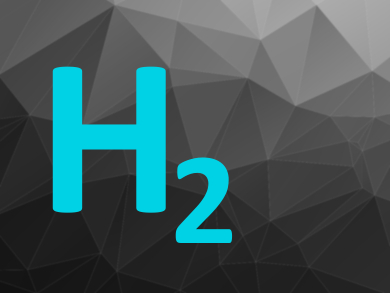The hydrogen evolution reaction (HER) in alkaline solutions is an important reaction for the development of hydrogen as a renewable and sustainable fuel. Developing inexpensive and efficient electrocatalysts for this reaction without precious metals would be useful. Heteroatom-doped carbon materials are promising candidates for this. However, so far, the overall catalytic activity is low and the kinetics in alkaline electrolytes are poor. This is due to the high energy barrier of water molecule dissociation on the catalyst surface.
Yang Hou, Zhejiang University, Hangzhou, China, Ming Qiu, Central China Normal University, Wuhan, Xinliang Feng, Technische Universitaet Dresden, Germany, and colleagues have developed a hybrid electrocatalyst for hydrogen evolution that is composed of atomically dispersed Ni–Nx species in a porous carbon matrix (Ni-N-C), decorated with Ni nanoparticles (Ni NP). The Ni NP|Ni-N-C catalyst was prepared by the pyrolysis of a hydrothermally prepared supermolecular composite of dicyandiamide and Ni ions, followed by an acid etching treatment.
The resulting catalyst has a porous structure with a large specific surface area of 140 m2 g−1. It has a high electrocatalytic activity towards HER in alkaline media with a small overpotential of 147 mV. This performance is comparable to the state-of-the-art heteroatom-doped nanocarbon catalysts and better than that of other transition-metal-based compounds. In addition, the team showed that a Ni NP|Ni-N-C/exfoliated graphene hybrid electrode has a high catalytic activity for overall water splitting under alkaline conditions.
According to the researchers, the incorporation of Ni NP into the Ni-N-C matrix effectively promotes the initial water dissociation process, resulting in improved reaction kinetics. These results could also help with the development of highly active catalysts for other electrochemical applications, e.g., CO2 reduction, oxygen reduction, or nitrogen fixation.
- Efficient alkaline hydrogen evolution on atomically dispersed Ni-Nx Species anchored porous carbon with embedded Ni nanoparticles by accelerating water dissociation kinetics,
Chaojun Lei, Yu Wang, Yang Hou, Pan Liu, Jian Yang, Tao Zhang, Xiaodong Zhuang, Mingwei Chen, Bin Yang, Lecheng Lei, Chris Yuan, Ming Qiu, Xinliang Feng,
Energy Environ. Sci. 2018.
https://doi.org/10.1039/c8ee01841c



